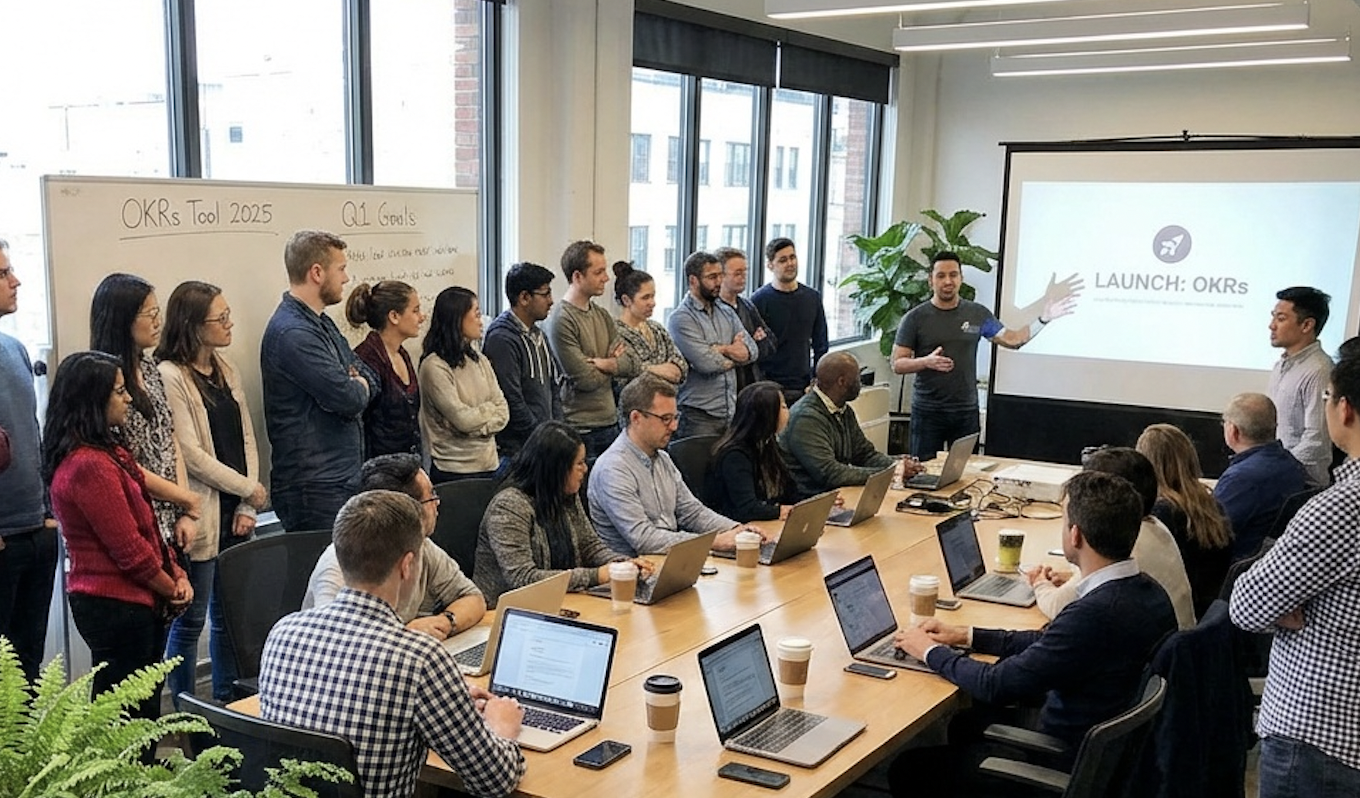Hitting every Key Result sounds like a dream.
Your dashboard is all green, the quarterly review is a lovefest, and nobody’s sweating.
But here’s the uncomfortable truth:
If you’re hitting 100% of your OKRs, you’re playing it too safe.
OKRs (Objectives and Key Results) aren’t designed to keep you comfortable. They’re designed to stretch you into territory where you’re not entirely sure you’ll succeed.
When you aim for perfect, you’re optimizing for certainty, not growth - and that’s where innovation goes to die.
If this sounds familiar, you’re not alone. Many teams unintentionally fall into the “play it safe” trap because it feels good in the short term. But to get real business impact, you need to push past that comfort zone.
The Real Point of OKRs
So, if OKRs aren’t about perfect scores, what are they about?
OKRs are a mechanism to:
- Align the team on a few bold priorities
- Push beyond current capabilities
- Learn fast, even if you fall short
A good OKR forces you to think differently - maybe even change how your team works. When you’re 100% confident you can hit the number, you’re not setting OKRs… you’re setting tasks.
This isn’t about making life harder for the sake of it. It’s about ensuring the goals actually help you grow, which brings us to the hidden cost of staying in your comfort zone.
Pro tip: If you already know the exact playbook to hit a KR before the quarter starts, it’s probably too easy. Add a 15–30% stretch so you’re innovating, not just executing.
The Cost of Playing it Safe
In the short term, easy OKRs look great. Everyone’s smiling. Quarterly reviews are full of “wins.” But in the long term? You risk killing ambition entirely.
When OKRs are too easy:
- Teams avoid risk (why jeopardise a perfect score?)
- Innovation stalls - no new plays, just recycling old ones
- Opportunities get missed because no one’s pushing the envelope
If you’ve been seeing high completion rates quarter after quarter but not much movement on the big business metrics, this might be the reason.
The 70% Rule
One proven way to guard against complacency is the 70% Rule.
It’s what Google’s OKRs aim for. The idea is simple: aim to hit about 70% of your OKRs.
Why 70%? Because it keeps you in the stretch zone - ambitious enough to inspire, but realistic enough to stay motivated.
Benchmark check:
- 100%+ = Too easy - raise the bar
- ~70% = Sweet spot - ambitious but achievable
- <50% = Overreach - refine scope or resources
The cultural shift here is key: missing a KR is not failure. It’s data. It’s direction. It’s how you discover the plays that truly move the needle.
And if you’re wondering how to tell whether you’re really in that stretch zone, the next section will give you a quick self-assessment.
Are Your OKRs Too Safe?
Ask yourself:
- Is no one nervous about the quarter ahead?
- Do the KRs read like BAU (business-as-usual) metrics?
- Can you already see the finish line from day one?
- Are completion rates >90% every quarter?
Mini-test:
Ask your team, “If we doubled this target, what would we do differently?”
If the answer is “nothing,” then the target isn’t stretching them - it’s just padding your scorecard.
When you’ve identified safe OKRs, the solution isn’t to make them absurdly ambitious. It’s about raising the bar strategically, which is what we’ll cover next.
Raising the Bar (Without Burning Out)
Stretch goals don’t mean reckless goals. The best approach is to design OKRs that encourage innovation while still feeling achievable with focus and effort.
Here’s how:
- Mix moonshots and roofshots: Have one or two big, hairy goals alongside a few ambitious-but-likely wins.
- Co-create stretch: Involve the team in setting targets so they have ownership and buy-in.
- Build learning KRs: Include Key Results focused on building new capabilities, not just output.
With the right mix, you’ll create OKRs that challenge your team without leading to burnout. And that leads us to the ultimate mindset shift.
Safe vs. Stretch: How to Spot the Difference
Not sure if your OKRs are ambitious enough? Use this quick comparison to see whether you’re setting goals that inspire growth - or ones that simply protect your scorecard.
The aim isn’t to make every OKR a stretch - but to ensure at least some of them push you into new territory. That’s where the growth, innovation, and breakthroughs happen.
Final thoughts
When you stretch right, you’ll miss sometimes - and that’s healthy.
Success isn’t “Did we hit 100%?” It’s “Did we achieve more than we thought possible at the start of the quarter?”
If your OKRs drive significant learning, expose gaps, and move you closer to your mission, they’ve done their job - even if the dashboard isn’t all green.
So next quarter, dare to aim higher. Choose one KR that makes you slightly uncomfortable. Then chase it hard - not because it’s easy, but because it’s the only way to uncover what your team is truly capable of.






